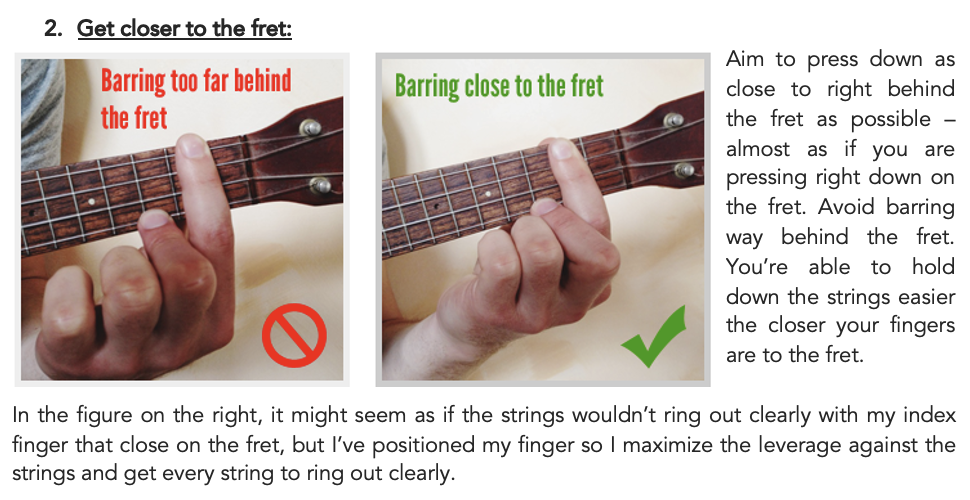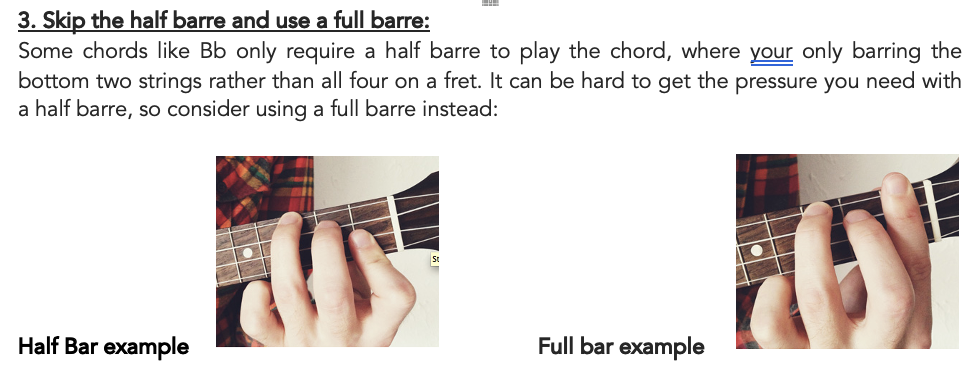MODULE 7
An Introduction To Barred Chords
Barred chords are a fantastic way to start unlocking methods of playing chords all over the fretboard. They can take a bit of practice as the idea is based around using your index finger as the nut and the rest of your fingers to add in the required chords shapes. It's better to get started on them sooner rather than later and will help expand your playing abilities.
BARRED CHORD EXAMPLES
To play a barred or bar chord, you are required to use a finger to fret or press down on multiple strings, usually the index finger, but you can make use your middle or ring finger too in certain situations. Some common examples of barred chords include: Bb, Cm7, D7 and E, as shown in the following diagrams.
A Barred chord can require either 2 (Bb), 3 (D7 & E ) or 4 (Cm7) strings to be barred together. When there is a number located to either the left or right of a chord box, this represents the fret number. The E major chord has a number 4 next to the barre section so this means you bar across fret 4 and use your little finger to play the extra note, three spaces up on fret 7.
BaSIC BArred Techniques
Practicing Barred Chords
It can take some time and effort to develop an effective barred chord technique so watch the video below for some tips on pressure points and hand positions etc. and try out the 4 illustrated barred chords.
16 FRET STRETCH @ 100BPM
You're almost there! Now it's time to put one of those barred chords into practice in Module 8 where you will explore a fantastic finger picking pattern.
87%







